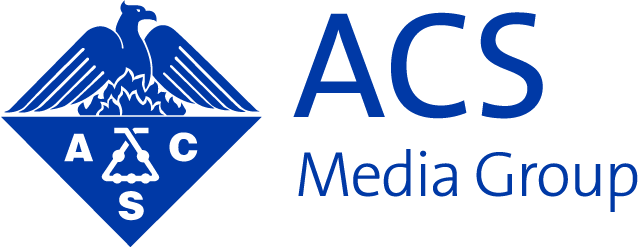Wander through the piles of marketing content on the internet and you’re sure to hear pundits declaring that traditional marketing, especially print advertising and public relations, is “dead.”
How true are these claims? Marketers may cite the rising distrust of media or the decreased effectiveness of banner ads in driving web traffic, but commonly touted statistics fail to tell the whole story.
In truth, advertising and public relations are far from dead; they have simply changed. It is no longer effective to increase ad spend and fire a press release along the wire as a marketing “strategy.” That said, combining advertising and public relations with modern approaches to marketing can help science companies present a strong, cohesive, persuasive message that reaches a broad audience.
Here’s what we mean. The old approach to advertising was simple: put out a lot of ads. The old approach to public relations was also simple: send out a lot of press releases. In an age when customer interaction (with each other and with companies) was limited by physical location, these approaches were effective. The increasing popularity of the internet, social media, and technology, however, now allows people to discuss brands and products at any time—with people anywhere in the world.
Although sweeping statements about the end of public relations and advertising are inaccurate, it is true that it is no longer possible to fully “control the story” through strategic advertising and public relations in the way it used to be. Surrounded by a torrent of digital media and advertising, general advertisements and earned media are not necessarily the best ways to have a conversation with an audience.
Social media, email, and content marketing, on the other hand, do allow that direct communication. Search engine optimization helps people find answers as they look for them: 94 percent of B2B buyers conduct online research before making a purchasing decision, and the average B2B buyer is 57 percent through the buyer’s journey before ever contacting a sales rep.
In modern science marketing, it therefore makes sense to let these new approaches do what they do best. Use content marketing, social media, and SEO to directly communicate and build trust with existing and target online audiences. Utilized at the same time, advertising and public relations can step away from their old purpose and focus on their strengths: building awareness and thought leadership.
For science marketers, the changing roles of marketing channels is quite beneficial.
Expanding technology is also making this ‘new’ world of marketing and communications more effective; targeting advertisements based on geographic location, keyword, or online history can place your advertisements in front of more relevant audiences. Science marketers can especially benefit from this approach and technology, because scientific products and services are so specific.
For example, one common SEO mistake in science marketing is using general keywords. Paid search, organic search, and online ads all can benefit from the specificity this technology allows. Remarketing allows you to target scientists based on their browsing history; keyword strategies can allow your paid ads to appear alongside published research. A PR campaign, focused on personalized pitches rather than mass press releases, can land high-profile stories that position a company as an expert in its field. For science marketers, the changing roles of marketing channels is quite beneficial.
As for the so-called “death” of banner ads, psychologist and marketing expert Robert Cialdini also argued powerfully in their favor during an interview on persuasion:
“Because people see [banner ads] on the peripheries, and they’re not really processing them, they don’t counter-argue them. One of the things that we know from the research in persuasion and social influence is that when people think that somebody is trying to persuade them, they build a wall and start scrupulously analyzing that message.
If you don’t think that this is really affecting you, it’s off to the side, you’re hardly paying attention, you don’t counter-argue it, and it gets in under the radar…
They get in. For example, research showed that individuals who were shown banner ads as much as 20 times while they were reading a piece of content online then became more favorable to the ad product—even though they never remembered seeing the banner ad.”
How to Revive Your Marketing
Outbound approaches to marketing increase overall awareness of the brand, which is particularly important for companies launching new products and programs or expanding into new geographic regions and markets. For example, a contract manufacturer expanding their presence internationally would do well to raise awareness by targeting local or regional publications for media buys, interviews, and bylined articles.
Once audiences are aware of the company, inbound approaches can draw them into a larger conversation. In particular, manufacturers of lab necessities would do well to focus on inbound approaches—appearing in search results is critical when customers are likely to go directly from search results to the point of sale.
Overall, the various marketing channels work together to raise the profile of a business, communicate with its audience, and draw in new leads.
3 Keys to Integrated Marketing
There are a few principles to keep in mind as science marketers expand their use of inbound approaches alongside advertising and public relations.
1. Messaging Must Be Consistent
The brand is the same, and should be presented with the same messaging across mediums. People reading about your company in a trade publication should receive the same core message as those finding you through organic search. As the number of marketing channels multiplies, it’s important to maintain a strong, coherent message.
2. Use of Marketing Channels Should Be Strategic
Before you decide to use a particular marketing tactic, ask yourself: what will this campaign accomplish?
The increasing number of marketing tactics makes it easier to mistakenly mismatch marketing tactics and desired outcomes. It is critical to look at overall marketing and business goals, considering all available channels to determine the best fit.
3. Inbound and Outbound Approaches Can Overlap
In coordinated marketing efforts, inbound and outbound approaches can overlap as well as support each other.
A contributed piece of earned media may include a link to your company—from a website with high domain authority. A print advertisement can include a simple URL and call to action, or even make use of augmented reality. Coordination within your marketing team across product lines can create stronger integrated campaigns with better overall results.
The fact that old approaches to advertising and public relations stopped working does not mean that advertising and public relations are dead. Rather, the best marketers have an opportunity to create compelling, integrated campaigns that fully utilize the unique advantages of every marketing channel.


















